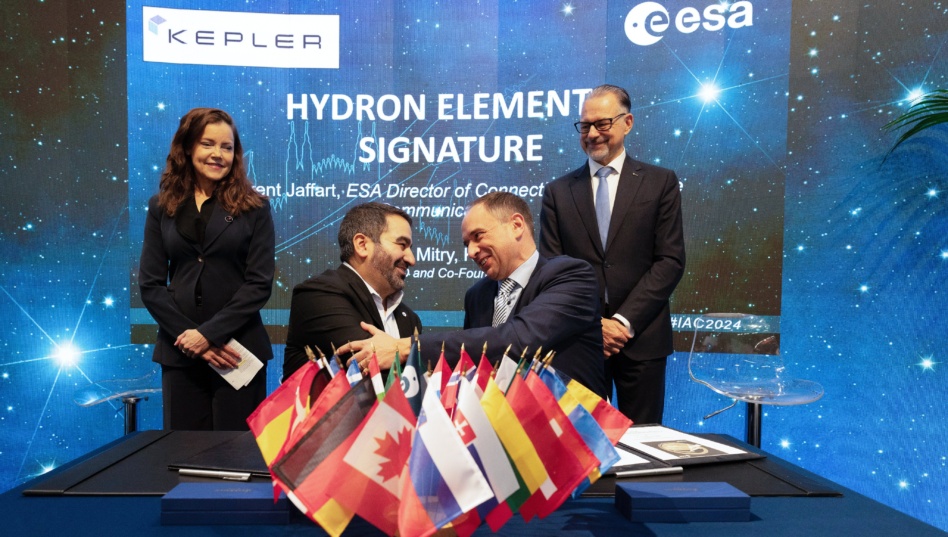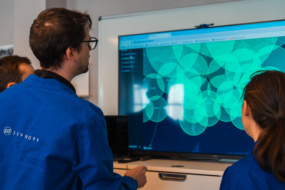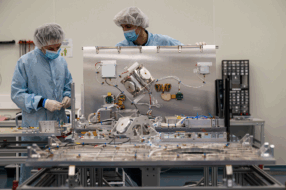Toronto-based satellite telecommunications provider Kepler Communications won a €36M ($39.1M) contract to develop the LEO segment of ESA’s High Throughput Optical Network (HydRON) program, the company announced yesterday.
The HydRON program supports ESA’s goal of delivering high-speed internet connectivity, and may one day operate at a rate of a terabit per second, according to Kepler CEO Mina Mitry.
The plan: In the program’s first phase, Kepler expects to deploy a ring of 10 optical communications satellites in LEO, which will allow ESA to demonstrate high-capacity, low-latency connectivity for a variety of use cases.
- Airborne: The constellation will support aircraft equipped with optical terminals to increase the availability of high-speed connectivity in the air.
- Telecom: Large telcos will be able to satisfy their need to backhaul through the network.
- Space access: EO satellites will gain the ability to route data through the network to achieve real-time or near-real-time data retrieval.
“We’re bringing true internet-based networking outside of Earth,” Mitry told Payload. “The other benefit it brings is resiliency to communication networks here on Earth because we can now become a resilient alternative to subsea fiber optic cable.”
The crew: This spring, Kepler partnered with TESAT and Airbus Defence and Space in a bid to win the HydRON contract.
- As the head of the group, Kepler is leading the manufacturing and operation of the constellation.
- TESAT is contributing expertise in optical communications terminals and network payload deployment.
- Airbus is providing engineering support and access to optical ground stations.
“We’re providing a holistic sort of communication service through the course of HydRON, and each partner is playing a role in supporting us to deliver what’s ultimately a network,” Mitry said.
Later elements of the HydRON program will focus on adding optical communications satellites in non-LEO orbits and building up the optical ground segment to bolster further downlink capabilities.




